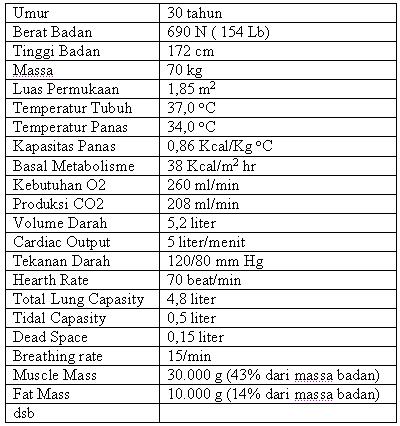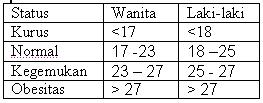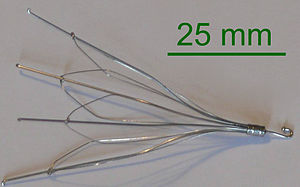VISION
- To be a center of excellence in physics and applied physics research and education in the national and international level
- To produce world-class graduates who are highly innovative and competent in scientific, academic and industrial environments.
Pengantar
Fisika berasal dari bahasa Yunani, physikos yang berarti ‘alamiah’. Karena itu Fisika merupakan suatu ilmu pengetahuan dasar yang mempelajari gejala-gejala alam dan interaksinya yang terjadi di alam semesta ini. Hal-hal yang dibicarakan di dalam fisika, selalu didasarkan pada pengamatan eksperimental dan pengukuran yang bersifat kuantitatif.
Fisika terbagi atas dua bagian yaitu :
1. Fisika klasik yang meliputi bidang : Mekanika, Listrik Magnet, Panas,Bunyi, Optika dan Gelombang.
2. Fisika Modern adalah perkembangan Fisika mulai abad 20 yaitu penemuan Relativitas Einsten. (Atom Inti, Radiasi dll)
Ilmu Fisika mendukung perkembangan teknologi, enginering (teknik sipil, elektro, mesin, pertambangan, dll), bahkan di bidang kesehatan (mis: kebidanan, keperawatan, kedokteran) dan lain-lain.
Dalam kesehatan kajian Fisika, seringkali dicirikan dengan awalan Bio: Biomekanika, Biothermal, Biofluida, Bioakustik, Biolistrik, Biooptik, Bioradiasi, dan lain-lain. 
[ Untuk materi dasar-dasar Fisika tentang Besaran Pokok - Turunan, Satuan, Vektor dan Skalar dapat dilihat di Materi Ringkas Fisika Dasar. ]
Berikut ini adalah materi tambahan terkait aspek Kesehatan.
Pengukuran Parameter Fisik
Berikut ini disajikan data standar manusia yang menggunakan sistem satuan internasional, turunan SI dan non SI untuk umur 30 tahun.
Dapat dicermati bahwa satuan dari besaran-besaran yang lazim digunakan dalam pengukuran fisika cukup familiar di gunakan dalam mempelajari fisika kesehatan.
Berikut ini contoh terapan lainnya:
Indeks Massa Tubuh:
yaitu pengukuran antropometri untuk menilai postur tubuh ideal atau apakah komponen tubuh sesuai dengan standard normal atau ideal. Pengukuran antropometri yang paling sering digunakan adalah rasio antara berat badan (dalam kg) dan tinggi badan (dalam m) kuadrat, yang disebut Indeks Massa Tubuh (IMT) sebagai berikut :
IMT = BB (kg) / (TB)^2
—————————————–catatan  ————
————
Anda akan temui kesalahfahaman penggunaan besaran berat, dalam Berat Badan (BB) yang seharusnya adalah massa badan, dengan penggunaan satuan kg ( yang ini sudah benar). Di masyarakat sendiri, hal tersebut seringkali terjadi…. perhatikan di pasar2, 
—————————————————————-
obesitas perlu diwaspadai karena biasanya berpotensi juga menderita penyakit degeneratif seperti Diabetes Melitus, hipertensi, hiperkolesterol dan kelainan metabolisme lain yang memerlukan pemeriksaan lanjut baik klinis atau laboratorium
Disebutkan bahwa batas ambang normal untuk laki-laki adalah: 20,1–25,0; dan untuk perempuan adalah : 18,7-23,8. Untuk kepentingan pemantauan dan tingkat defesiensi kalori ataupun tingkat kegemukan, lebih lanjut FAO/WHO menyarankan menggunakan satu batas ambang antara laki-laki dan perempuan. Ketentuan yang digunakan adalah menggunakan ambang batas laki-laki untuk kategori kurus tingkat berat dan menggunakan ambang batas pada perempuan untuk kategorigemuk tingkat berat.
Untuk kepentingan Indonesia, batas ambang dimodifikasi lagi berdasarkan pengalam klinis dan hasil penelitian dibeberapa negara berkembang. Pada akhirnya diambil kesimpulan, batas ambang IMT untuk Indonesia adalah sebagai berikut:
Jika seseorang termasuk kategori :
1. IMT 27,0 : keadaan orang tersebut disebut gemuk dengan kelebihan berat badan tingkat berat
Contoh cara menghitung :
Opong dengan tinggi badan 159 cm, mempunyai berat badan 70 kg. Maka IMT Opong adalah :
70 70
——————– = ——– = 27,7
(1,59 X 1,59) m 2,53
Berarti status gizi Opong adalah gemuk tingkat berat, dan Opong dianjurkan menurunkan berat badannya sampai menjadi 47- 63 kg agar mencapai berat badan normal (dengan IMT 18,5 – 25,0).
PERHATIAN !
Seseorang dengan IMT > 25,0 harus berhati-hati agar berat badan tidak naik. Dianjurkan untuk menurnkan berat badannya sampai dalam batas normal.
Berat Badan Ideal :
Atau untuk mengetahui Berat Badan ideal dapat menggunakan rumus Brocca sebagai berikut :
BB ideal = (TB – 100) – 10% (TB – 100)
Batas ambang yang diperbolehkan adalah + 10%. Bila > 10% sudah kegemukan dan bila diatas 20% sudah terjadi obesitas.
Contoh: wanita dengan TB = 161 cm, BB = 58 kg
BB ideal = (161 – 100) – 10% (161 – 100)
= 61 – 6,1 = 54,9 (55 kg)
BB 58 kg masih dalam batas > 10%.
Lila (Lingkar Lengan Kiri Atas):
Pengukuran lain yang dapat dilakukan untuk menilai apakah seseorang tersebut kurus menderita kurang gizi, normal atau gemuk, dengan mengukur Lingkar lengan kiri atas (Lila). Biasanya dilakukan pada wanita usia 15 – 45 tahun. Bila Lila < 23,5 cm, wanita tersebut menderita Kurang Energi Kronis (KEK).
RLPP (Rasio Lingkar Perut dan Lingkar Pinggang):
Pengukuran antropometri lain yang sering digunakan adalah mengukur rasio Lingkar perut dan Lingkar Pinggang (RLPP). Pada wanita RLPP yang disarankan < 0,8 sedangkan pada laki-laki 0,8 pada wanita dan > 1 pada laki-laki mempunyai risiko menderita penyakit jantung lebih besar dari yang RLPP nya dibawah ambang batas.
3 Hal yang menjadi faktor penentu ketepatan tindakan pengukuran, yaitu: (1) Alat, (2) Metode, dan (3) manusia-nya.
Kesalahan Pengukuran dalam Tindakan Medis (False)
Untuk menyatakan seseorang sakit atau tidak, perlu dilakukan pengukuran terhadap besaran fisis tubuh seperti suhu badan, tekanan darah, frekuensi detak jantung dan sebagainya.
Kesalahan dapat terjadi dari proses pengukuran disebabkan: faktor alat, metode maupun human error, sehingga terjadi false positif dan negatif.
False Positif: Error yang terjadi dimana penderita dinyatakan menderita suatu penyakit padahal tidak
False Negatif: Error yang terjadi dimana penderita dinyatakan tidak sakit padahal menderita suatu penyakit
Untuk menghindari :
1. Dalam pengambilan pengukuran
2. Pengulangan pengukuran
3. Penggunaan alat yang dapat dipercaya
4. Kalibrasi terhadap alat.
Sumber:
http://alifis.wordpress.com/2009/10/24/seri-fisika-kesehatan_pendahuluan/
(Alifis@Corner)




